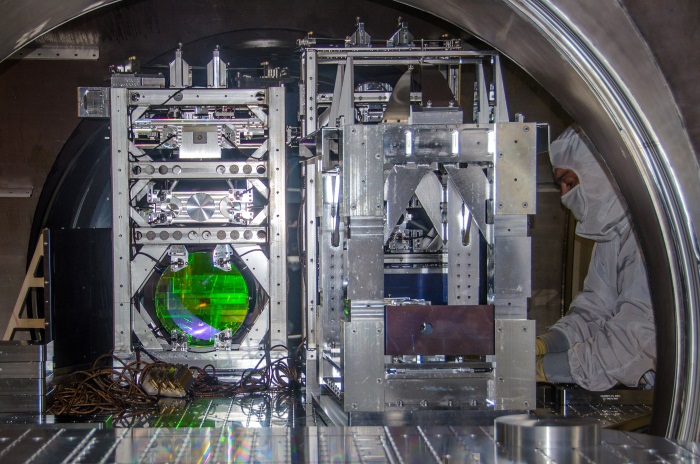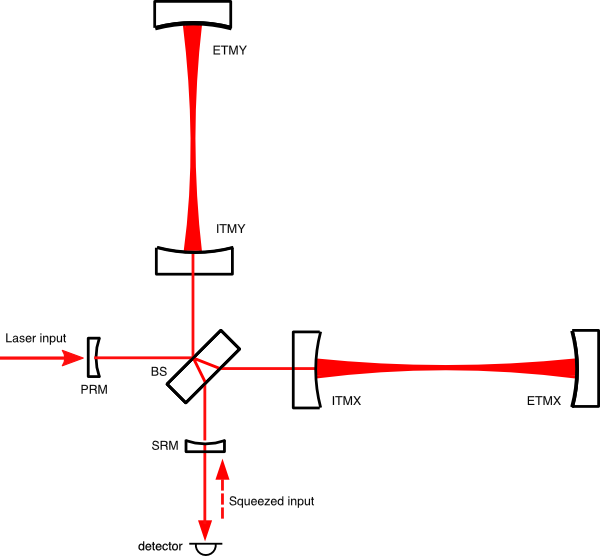Signal Recycling
Signal Recycling
Gravitational waves "modulate" the path taken by light through space-time. One key aspect to making sensitive interferometric measurements to detect these waves is to match the time the light spends travelling up and down the arms of the detector to the period of the waves. This matching is in part achieved by choice of the arm length and the number of times the light reflects up and down the arms, but these are both fixed by design. Signal recycling allows the matching condition to be adjusted to "tune" the detector's response to the frequency band of the waves, somewhat analogous to tuning a radio receiver. Signal recycling is intrinsic to GEO600, and was selected for Advanced LIGO to provide balanced performance for a range of potential signals including those from coalescing black holes and neutron stars. More about signal recycling on GEO600 and Advanced LIGO can be found at these links.

Signal recycling: from invention to implementation in Advanced LIGO
The concept of signal recycling was proposed by the late Dr Brian Meers, here at The University of Glasgow in 1988. He published his discovery, originally called "dual recycling" as a method of optimising the response of gravitational wave detectors to the expected astrophysical signals. The invention was counter-intuitive as it involved placing a partially-transmitting mirror between the main interferometer and the photodetector, but by careful adjustment of the position of the mirror the important gravitational wave signals can be boosted.
The demonstration of the new technique was a "bench-top" test in 1991 by Strain and Meers. This was followed by a series of larger-scale experiments carried out at Glasgow and elsewhere. By 2002 signal recycling was operating on GEO600, which until the start of operation of Advanced LIGO was the only gravitational wave instrument to employ the new technique.
By the late 1990s signal recycling was considered to be a mature technology and members of the GEO collaboration argued successfully for inclusion as part of the Advanced LIGO design. Signal recycling brings several advantages to Advanced LIGO, the most important of which is improved sensitivity in the low-audio frequency band occupied by signals produced by coalescing compact objects. A paper describing the technology of Advanced LIGO sets signal recycling in context.

The operation of signal recycling can be explained if it is understood that light can build up or "resonate" in optical cavities (the space formed when two mirrors face each other to potentially "trap" a light beam). Resonance occurs if the path that light travels along from one mirror to the other and back, is almost exactly a whole number of optical wavelengths. In Advanced LIGO the wavelength is about 1 micrometre, so the round-trip optical path in the 4 km long arms is about 8 billion wavelengths. To make the interferometer work, all the interferometer mirrors, including the signal recycling mirror (SRM in the figure), must be positioned along the light path to a precision of better than 1 millionth of a single wavelength.
When everything is adjusted, signal recycling allows the resonance of the interferometer as a whole to be altered to boost the selected signals. The reflectivity chosen for the signal recycling mirror determines the sharpness of the tuning - in Advanced LIGO we arrange it to boost signals from coalescing black hole and neutron star systems. As Advanced LIGO progresses though commissioning and enters continuous observing, the signal recycling mirror will be exchanged and adjusted to maximise the response of the system in each of the observing runs.
